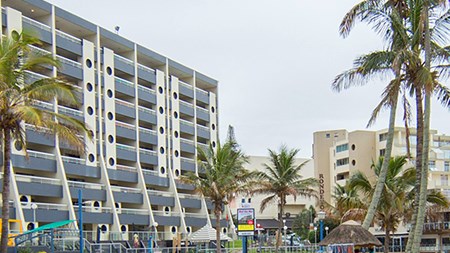Is Soweto becoming the 'land of milk and honey', a popular place to reside with an upcoming prosperity and flourishing residential property market?
Now a far cry from simply an outer-area of Johannesburg as it was once thought to be, Soweto is gaining in popularity and the housing market is flourishing.
From what were once 'matchbox' houses, built by the apartheid government as welfare housing, the sight of affluent homes is now not uncommon. Social programmes, such as the Greening Soweto Campaign (which plans to plant 300 000 trees throughout Soweto by 2010), together with commercial projects such as the Baralink (which aims to turn the Baragwanath Precinct into a major commercial hub), add to the upcoming prosperity of this city.
The trickle-down effect of the recent property boom throughout the country has been vast. The boom touched on the majority of areas within South Africa, and lately, its effect has also been evident in Soweto. This is in line with the increase in more affordable housing throughout the country. Occasionally, when house prices experience large increases it may limit the ability of individuals to migrate between lower-priced regions to higher-priced regions. As a result, those who once would have moved out of Soweto due to increasing income growth may now choose to remain in Soweto (rather than paying higher prices) and instead, enhance their current living standards as their financial circumstances improve.
The house price growth experienced in Soweto has until recently lagged behind that of national house prices. Soweto lagged until the start of 2005, when house prices grew in excess of 30% on average for that year, and continued to grow strongly into 2006. The table below illustrates the differences in the median house prices in Soweto and the national residential property market, together with the differences in their respective growth rates.
The property market boom currently under way in Soweto has to some extent been the consequence of national housing dynamics alluded to above, but it has also been driven by changing socio-economic factors. The income distribution of Soweto's population has been converging to that of the rest of the country, narrowing the sizeable gap that prevailed earlier. For example, in 2000, only 4.6% of Soweto's adult population earned between R7 000 and R12 000 per month, compared with 8% of the total population. By 2006, this had increased to 11.5% in the case of Soweto, compared to 10.7% nationally. This implies a noticeably larger demand in Soweto for properties selling for between R190 000 and R330 000 indicating that 60 000 more Soweto residents can afford such houses now than in 2000.
When considering mortgage applications from Soweto, a comparison between those done on single and joint incomes (in other words, where houses are mortgaged premised on a single individual's income or the joint income of, say, a couple) highlights interesting differences. Research has indicated that the average income of application based on a single income doesn't differ substantially from the combined income in the case of applications based on joint incomes. This implies that the primary reason for applications based on joint incomes does not seem to be the desire to purchase an above average house, but rather merely to afford an average house. This is corroborated by the fact that, generally, the values of houses bought on combined or individual incomes are quite similar.
The potential of the property market gains in Soweto have already been recognised by most real estate agencies. With smaller agencies established in the area for some time now, such as Mashingo Properties (in collaboration with Wendy Machinik Properties), larger agencies such as Pam Golding and RE/MAX have also recently established a presence in the area. This real estate agency presence would usually be enough indication of expected growth in Soweto's and its surrounding areas' property markets.
However, along with additional evidence of increased transfer activity, enhanced lifestyle and upward economic mobility, the implication is clear - Soweto in the south has the potential to become the Midrand of the north.
The change taking place in the individual residing in Soweto, in respects to income and spending habits, are not the only factors driving the potential for this property market. The presence of real estate leaders clearly shows the increasing popularity of living in Soweto. Add to this the entry of Soweto's first regional shopping centre of international standards, Maponya Mall, and the consequent influx of prominent retail brands, which are expected to provide further impetus for future residential growth.


